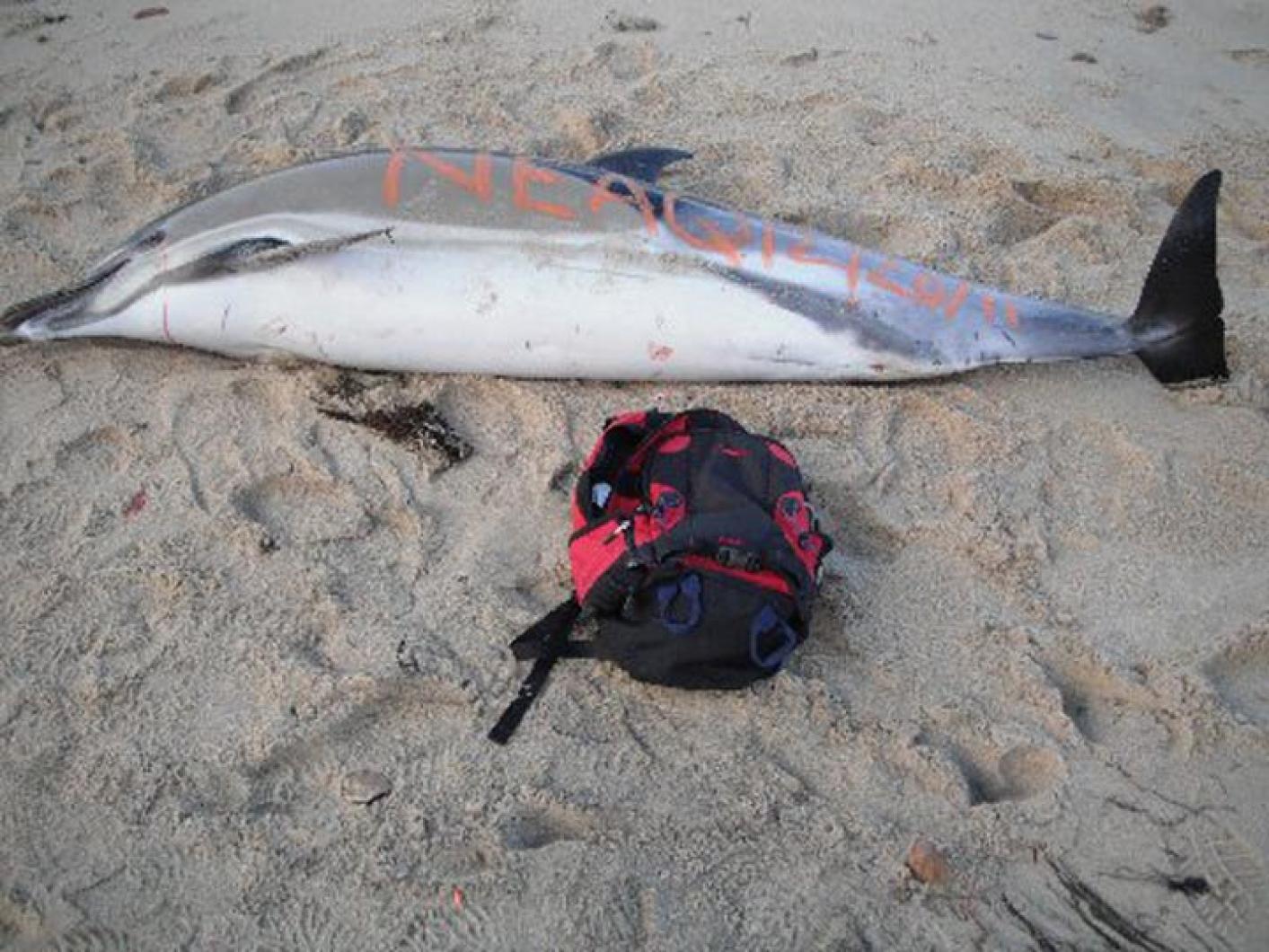For a moment, he forgot the feathers. Even the renowned bird guy couldn’t resist the gorgeousness of these magnificent mammals. Although it was likely just a moment, John James Audubon put down his binoculars to watch and wonder at the dolphins.
“One day I caught four Dolphins, how much I have gazed at these beautiful creatures . . . as they changed their hue in twenty varieties of richest arrangement of tints.” The common dolphin is a sight to behold, and we are lucky if we can behold one (in our imagination or in our experience) as Audubon did.
Gray, tan, white and yellow intermingle on its body in an hourglass design, creating a canvas that the artist and naturalist alike will admire. Last week, a few Chappaquiddick residents were able to appreciate the shape and hues of the common dolphin up close, when one washed up on the beach. A tragic end, unfortunately, to a creature of uncommon beauty and grace.
This washashore was a common dolphin in the genus Delphinus. There are two types of common dolphins that inhabit coastal and offshore waters: Delphinus delphis, the short-beaked, and Delphinus capensis, or long-beaked, variety. The word Delphinus comes from the Greek root, delphis, meaning womb.
While the common dolphin is often depicted in legends and lore, it is not the dolphin of movie, television, and Sea World fame. Flipper and its ilk are bottlenose dolphins. Common dolphins don’t survive well in captivity. But they do thrive in their natural environment.
According to Jacques Yves Cousteau, they are very contented in their watery world. He wrote: “The happiness of the bee and the dolphin is to exist. For man it is to know that and to wonder at it.” I agree. No story of a dolphin makes me sad, and no story of a dolphin stranding makes me glad.
Common dolphins congregate in large groups of hundreds to thousand dolphins, and they happily coexist with other marine mammals (seals, whales, etc.). They hunt using echolocation, and will often work together as a group to shepherd their prey. Squid, herring, octopus, shrimp, cuttlefish, sardines, and other small schooling fish find this teamwork unbeatable. Sharks — and humans — may just find it admirable.
Dolphins do have some predators, but they are better known (to us) for their comfort and familiarity around people. In mythology and even in modern times, dolphins are celebrated as helpers of humankind, leading ships and sailors to safety. Aristotle observed: “The Dolphin is not afraid of a human being as something strange to it, but comes to meet vessels at sea and sports and gambols round them even when under full sail.” He was not the only writer of antiquity to make note of the playfulness and sociability of dolphins.
Stories of dolphins becoming human, and vice versa, abound in mythology. In one tale, Dionysus, the god of wine, was traveling incognito on a ship captured by pirates. The ship’s sailors jumped overboard to escape, though many of them couldn’t swim. Out of pity, Dionysus turned the drowning sailors into dolphins, and gave them the charge of helping others.
In another myth, Poseidon, the god of the sea, pursued the beautiful Aphrodite. She ran from his advances, but was convinced by a dolphin (sent by Poseidon) to return and accept Poseidon’s wooing. As reward for its service, Poseidon put a dolphin in the sky where it remains.
This constellation, Delphinus, helps us find our way by land or by sea, just like its real-life namesake. John Audubon could therefore have just as easily turned his binoculars to the sky as to the ocean to gaze at and appreciate dolphins; but no doubt his attention would then have reverted to his beloved birds.
Suzan Bellincampi is director of the Felix Neck Wildlife Sanctuary in Edgartown.




Comments
Comment policy »